Best practices for deploying process mining in large organizations
In over 30 years working in business process management (BPM), we at QPR have identified the two most common causes of operational inefficiency in large organizations: lack of attention on the "as-is" processes, and lack of means to understand them fully.
In organizational transformation initiatives, companies often overlook the importance of what's really happening (the "as-is" processes), while being over-ambitious in improving what should be happening (the "to-be" processes).
On the other end of the spectrum, some organizations, fully aware they shouldn't count their chickens before they hatch, are eager to create workshops and interviews to understand what's really the current state of their operations. Unfortunately, these process discovery attempts are lengthy, costly and the results often biased and incomprehensive.
This is where process mining steps in. Making sense of the data in your own organization's information systems, process mining software such as QPR ProcessAnalyzer offer you a complete, fact-based picture of how your processes perform in reality, identify the bottlenecks, and suggest the actions you should take to fix process problems before they happen.
Read the "Whats, Whys, and Hows of process mining" on our pillar page.
Check out our "What is process mining?" blog post.
In this blog post, I'll discuss the five best practices for deploying process mining in large organizations, namely BPM Maturity, Exceptions, Process Excellence, Use Cases and Center of Excellence.
See the on-demand webinar in this topic and download the presentation slides here.
Writer's notes: This blog post was originally published in April 2020, and has been updated in 2022 for accuracy and comprehensiveness.
1. Be aware of your Business Process Management (BPM) Maturity
It makes a big difference whether your organization is strictly function-oriented or if you already have at least some level of process orientation. In the function-oriented organizations, the business functions such as sales, marketing, delivery, finance and R&D are operating as functional silos. In process organizations, there are clear process owner responsibilities for long end-to-end processes.
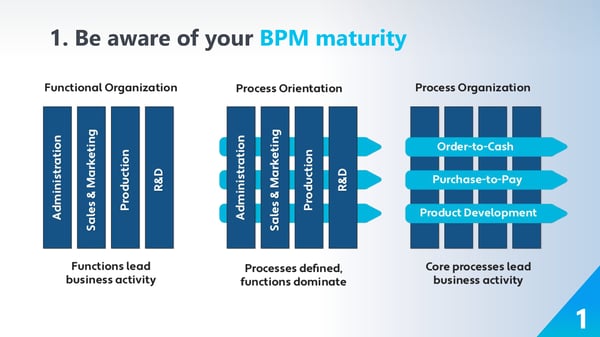
In functional organizations, the potential to improve business with Process Mining is extraordinarily high, as the processes are not clearly defined. The benefits of Process Mining here are two-fold: First, these organizations can use Process Mining to discover their long end-to-end processes and gain an in-depth understanding and 100% coverage of all processes. Second, Process Mining will drive the efficiency between the functional siloed units in the long end-to-end processes, allowing these kinds of organizations to accomplish massive improvements. However, since the organization is based on functional siloes, it's more challenging to find management support and executive sponsors, as the process ownership responsibilities are not clearly defined.
In contrast, in organizations with mature BPM, process owners have been nominated and they have a thorough understanding of their processes. The application of process mining here will take effect in a quick and smooth manner. Sometimes the scope of changes due to process mining will be less significant in these organizations than in functional ones if the organization has made end-to-end process improvements already for decades. Still, it will nevertheless be valuable and easy to deploy process mining improvements into the operations.
2. Exceptions cause problems and require effort
We always remind our customers that exceptions are the biggest problems in a process. Often, 80% of business is done according to the agreed to-be processes and 20% contains exceptions. However, the 80% of business-as-designed only accounts for 20% of the total effort performed by the organization. This means workers have to spend 80% of their time and effort to tackle rework, bottlenecks and long lead-times.
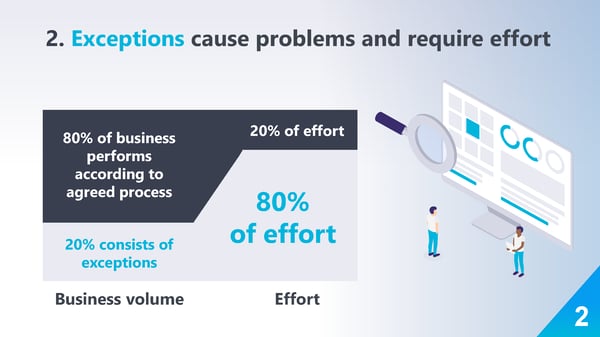 Process mining is best the method to resolve the non-compliant processes. With process mining software, such as QPR ProcessAnalyzer, the process owners in your organization can get a holistic view of their processes, easily identify process exceptions and their root causes, and even fix the accidents before they happen.
Process mining is best the method to resolve the non-compliant processes. With process mining software, such as QPR ProcessAnalyzer, the process owners in your organization can get a holistic view of their processes, easily identify process exceptions and their root causes, and even fix the accidents before they happen.
A reduction of exceptions by 10% can save work effort by 40%, which means that customer get much better service and employees can be more productive. In the long run, this reduction of exceptions will increase customer satisfaction, employee productivity, and process efficiency.
3. Three Steps to Process Excellence: Customer, Flow, Automation
With hands-on experience of working with customers from large organizations worldwide, QPR experts indicate the three most important types of KPIs: happy customer, happy flow, and happy automation.
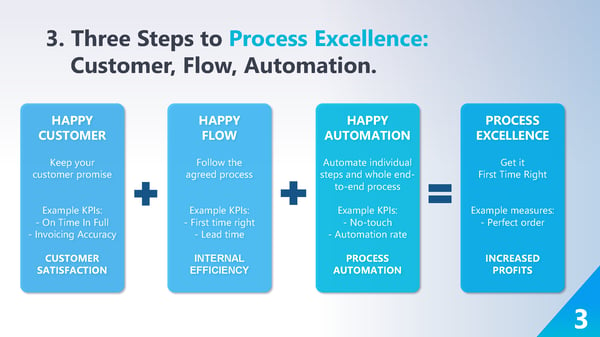
First of all, the happy customer KPIs mean keeping your promises with customers. For example, after customers make purchases with your organization, they should receive the order on time and in full. These KPIs aim to achieve high customer satisfaction.
Second of all, the happy flow KPIs assure that organizations follow the agreed process in order to accomplish internal efficiency. Examples of the happy flow are first time right and lead time KPIs.
Last but not least, the happy automation KPIs help your organization to monitor your process automation progress. The happy automation KPIs can applied for both individual steps and the whole end-to-end process. (Read more about QPR's solution for Robotic Process Automation here.)
You can achieve process excellence for your organization when all these three steps (happy customer, happy flow and happy automation) are reached for all individual cases. This framework of process excellence can be used to improve all of the processes in your business.
4. Apply to multiple Use Cases
Large organizations tend to apply Process Mining to specific places of their business, where the pain points are alarming or where people have the necessary and suitable skill sets for Process Mining. However, we strongly believe that once you have achieved transparency into all of your processes, this in-depth understanding can be applied in every other places in your organizations.
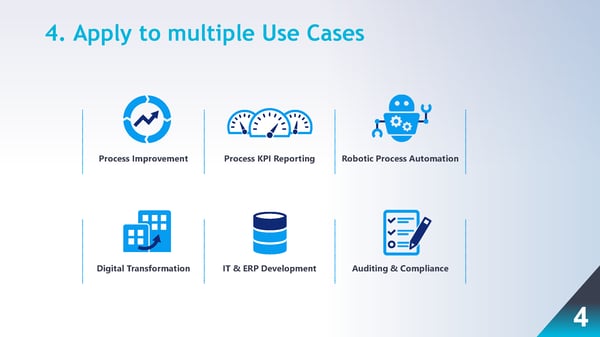
Check out these Process Mining solutions and can be applied to different parts of your business:
- Process Improvement
- Process KPI Reporting
- Robotic Process Automation
- Digital Transformation
- IT & ERP Development
- Auditing & Compliance
5. Build a Process Mining Center of Excellence
In order to fully utilize the methodology, we highly recommend organizations to build a center of excellence for Process Mining.
From our experience in real-life customer cases, Process Mining can be deployed on three levels.
Firstly, Process Mining can help process managers quickly gain insights from their data. Lambros Bessas, Senior IT Manager at Piraeus Bank shared his experience with QPR ProcessAnalyzer: "We gave the data to the system, and right away, in five minutes, we saw the bottlenecks of the process." In other words, since the first moments of using our Process Mining software, process owners can identify the problems in their processes and start fixing them.
Secondly, a more common scenario is when organizations use the Process Mining software for development projects. These projects aim to achieve a successful outcome for ongoing initiatives in one part of the organization - for example, in internal auditing, a loan application process or a delivery process. In these projects, people are aware of the potential of Process Mining and how to use the tool.
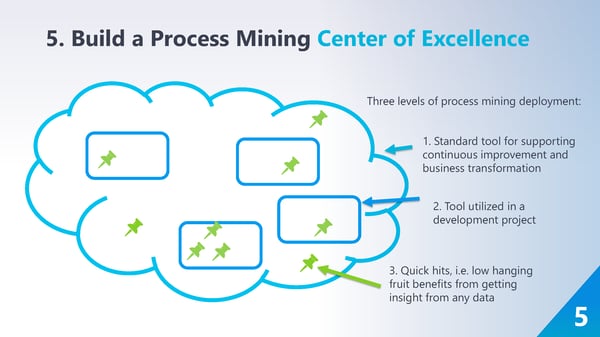
Finally, organizations should make Process Mining a standard tool for supporting their continuous improvement and business transformation. In order to achieve this goal, a center of excellence should be built among everyone in the organization. Process Mining is considered a relatively easy-to-use technology when you already have business models in your system. However, it can prove challenging when organizations need to create their own models, taking into account all the specific details, customization and information from their own systems, such as ERP and logistics.
Our advice is to first consider your organization's forte. For example, if your organization is mature in terms of BPM, then your Business Process Management team is a perfectly suitable team to build your center of excellence for Process Mining. If your IT team is active in developing processes, your center of excellence could be on the IT side. If your organization has a task force with suitable skill sets to own the Process Mining software, then it could be on your digital transformation unit.
Refer to our webinar recording for more tips and details about these solutions in real life customer cases.
Those were the five process mining best practices - thanks for reading this far!
In the next section, I'll discuss three customer success stories with QPR ProcessAnalyzer - the leading Process Mining tool on the market - to show how these best practices work in: Increasing efficiency by 60%, cutting lead times by 85%, and coverage of enterprise-wide processes.
Customer Case 1: Metsä Board
Metsä Board is a a leading European producer of premium fresh fibre paperboards with headquarters in Espoo, Finland.
(Metsä Board interview highlight | 1 minute)
Being one of QPR ProcessAnalyzer's first customers, Metsä Board succeeded in doubling the number of conformant orders and raising their order line volume by 60% without changes in their headcount. Read Metsä Board's full success story here.
Customer Case 2: Piraeus Bank
Piraeus Bank is a Greek multinational financial services company with its headquarters in Athens, Greece.
(Piraeus Bank interview highlight | 20 seconds)
Learn how Piraeus Bank leveraged QPR ProcessAnalyzer to shorten their loan application process from 35 minutes to 5 minutes on average in their success story here.
Customer Case 3: Terumo Europe
Terumo Europe is a leading medical company with their EMEA headquarter in Belgium.
(Terumo Europe interview highlight | 90 seconds)
See how Terumo Europe successfully built a complete enterprise-wide X-ray of processes on their success story here.
It’s a good time to take a look at Process Mining if your company hasn’t already. The capabilities and usability of Process Mining software are improving rapidly, and the market is quickly becoming mature, although there’s still much work to be done.
If you think your company is ready to step it up with the future of as-is process modeling and process efficiency maximization, the fastest way to get things moving is to:
You may also like
These related stories
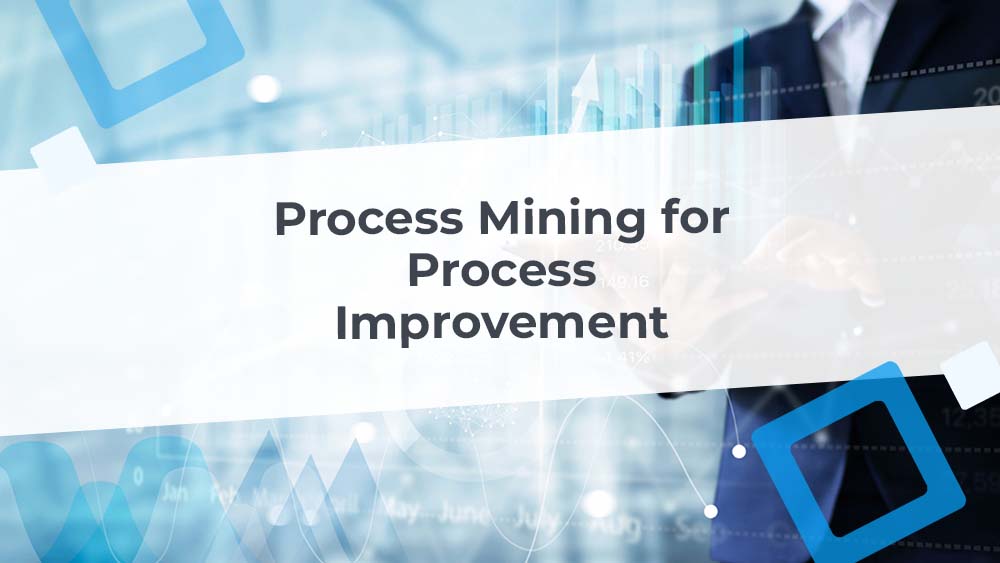
Process mining for process improvement
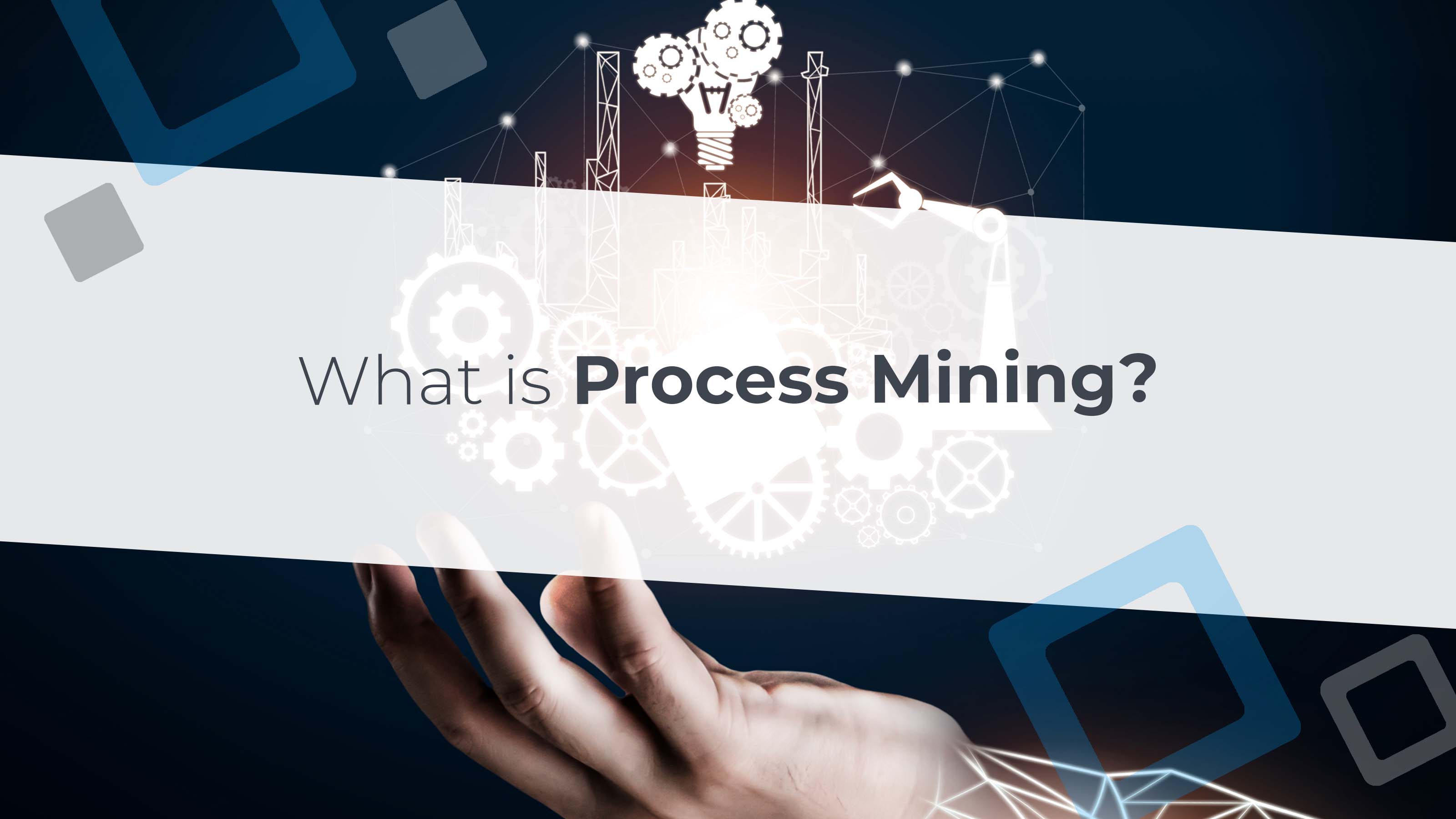
What is process mining?

